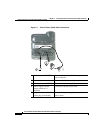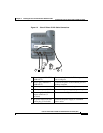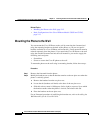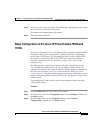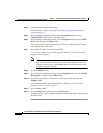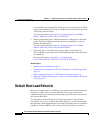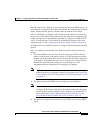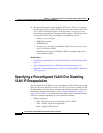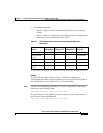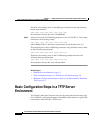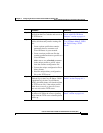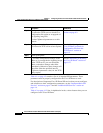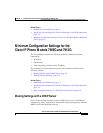
Chapter 3 Configuring the Cisco IP Phone Models 7905G and 7912G for SIP
Default Boot Load Behavior
3-2
Cisco IP Phone Models 7905G and 7912G Administrator Guide (SIP)
OL-4277-01
Cisco IP Phone can automatically download its latest profile from the TFTP
server when the phone powers up, is refreshed or reset, or when the specified
TFTP query interval expires.
For more information, see Chapter 6, “Configuring the Cisco IP Phone
Models 7905G and 7912G Using a TFTP Server.”
• Phone configuration menus—Manual method for configuring an individual
phone. Each Cisco IP Phone includes menus for configuring a variety of
network and SIP settings.
For more information, see Chapter 5, “Configuring the Cisco IP Phone
Models 7905G and 7912G Using the Phone Menus.”
• Phone web page—Convenient if you plan to deploy a small number of
Cisco IP Phones in your network. To use this method, the phone must first obtain
IP connectivity
For more information, see Chapter 7, “Configuring the
Cisco IP Phone Models 7905G and 7912G Using Web Pages.”
Related Topics
• Default Boot Load Behavior, page 3-2
• Specifying a Preconfigured VLAN ID or Disabling VLAN IP Encapsulation,
page 3-4
• Basic Configuration Steps in a TFTP Server Environment, page 3-6
• Minimum Configuration Settings for the Cisco IP Phone Models 7905G and
7912G, page 3-9
Default Boot Load Behavior
Before you configure the Cisco IP Phone, you need to know how the default boot
load process works. Once you understand this process, you will be able to
configure the phone by following the instructions provided in this section and in
the sections that follow.
It is important to understand the boot load process because if your network
environment is not set up to follow this default behavior, you will need to make
the applicable configuration changes. For example, by default, the Cisco IP Phone
attempts to contact a DHCP server for the necessary IP addresses to achieve



